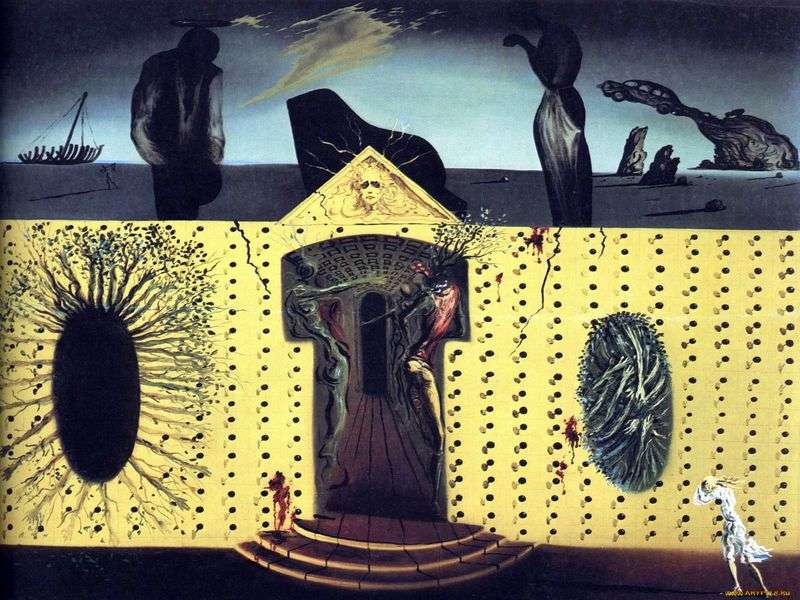
The history of the unfortunate lovers Tristan and Isolde occupied Dali for many years. He took so much that he, based on Wagner’s opera, created a libretto and scenery for the ballet “Mad Tristan”, staged in New York in 1944.
The painting “Mad Tristan”, dated 1938-1939, is the forerunner of those same scenery. The grain from which the grandiose plan has grown. It contains many of the motives used by the artist in the design of the ballet. For example, the intertwining branches and roots of trees – a hint at the trees that grew on the graves of Tristan and Isolde. The characters’ hands are like branches and roots, and the trees in the picture stretch their knobby fingers to each other. On the upper “tier” of the picture is a desert landscape typical of Dali. The sky is gloomy, subjects cast long shadows. In the background – bizarre scenery: the skeleton of the ship, whose frames are reminiscent of the whale’s ribs, the rock with the car growing out of it.
In the foreground is the piano silhouette and the human figures standing on either side of it with their heads bowed. Man and woman. The man holds his hat in his hands. On his head lies an oval – a phallic form – a stone, a load of madness that tilts his head to the ground. The dirty-yellow tattered cloud is aimed at the person, as the accusing or threatening finger. In the distance, behind his back, you can see a tiny little man walking along the desert to the horizon and carrying something on his shoulder. Maybe it’s death with her scythe? And beyond the horizon, in the distance, the edge of the sea turns blue with a narrow strip. The lower “level” is a bizarre hallucination in a bright yellow color.
The building is covered with geometrically regular rows of wallpaper nails. Its facade cuts through the cracks, in some places – blood stains. The roof facade of this building stands upward. It depicts a woman’s head with hair-branches that go beyond the boundaries of the architectural form. Three round steps of the porch lead into the building. The entrance is made in the form of a keyhole. The viewer sees a long narrow room leading to the depth of the house.
Along the walls, like caryatids, towering figures, woven from tree branches and roots. Perhaps, this narrow gallery-suite can be interpreted as a hint of a female womb, and blood stains – as an allusion to a famous episode of the legend. In the lower right corner of the picture the viewer sees a figure of a woman in a white dress. In desperation, covering her face with her hands, she wanders to the porch, as if overcoming a hurricane wind.
On the left and right of the entrance on the facade of the building are two oval elements: apparently, these are the two graves of poor lovers. One grave is literally bristled with outward branches and roots. The other, on the contrary, is locked in itself; All branches-arms are drawn, crossed and intertwined with each other. Tristan in his madness is directed outward; Isolde is closed in the circle of her despair – in life, and after death.
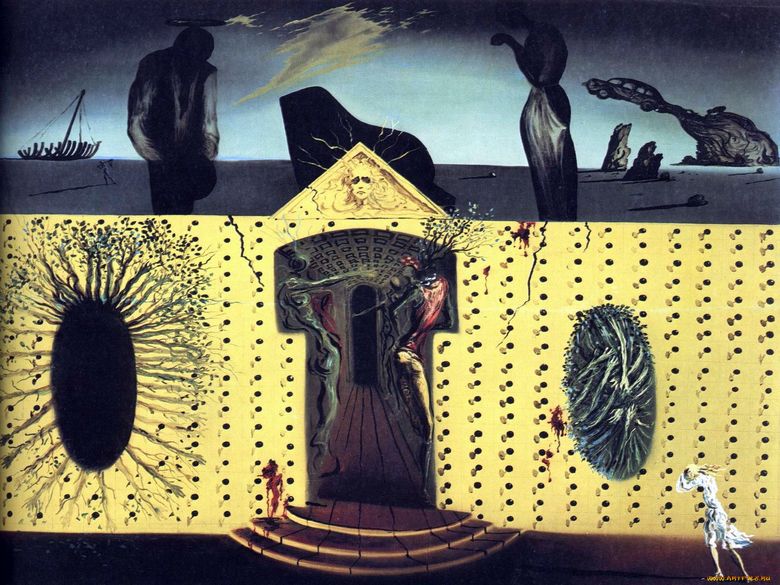 Mad Tristan – Salvador Dali
Mad Tristan – Salvador Dali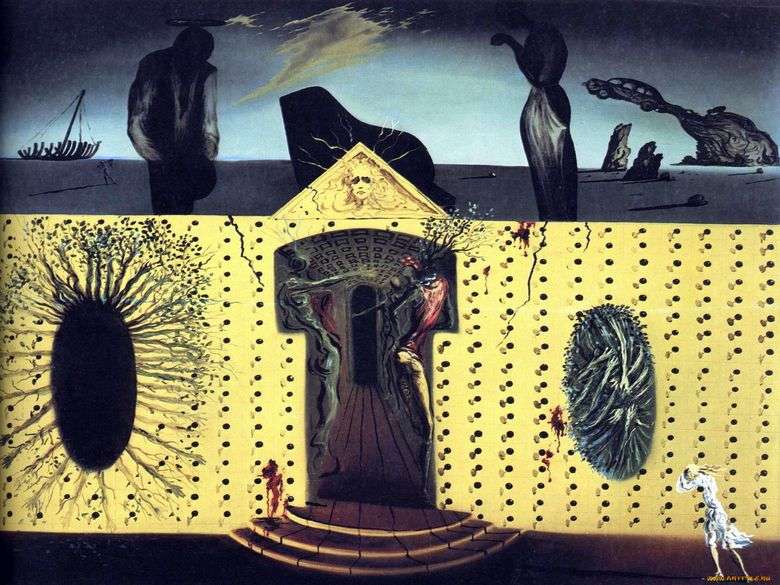 Mad Tristan – Salvador Dali
Mad Tristan – Salvador Dali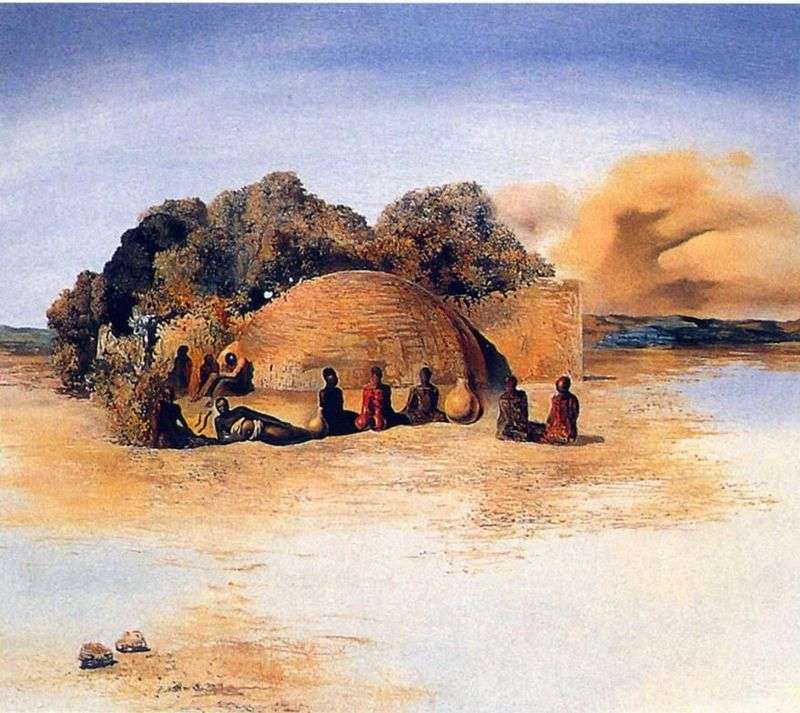 Paranoid Face by Salvador Dali
Paranoid Face by Salvador Dali Tristan and Isolde by John Waterhouse
Tristan and Isolde by John Waterhouse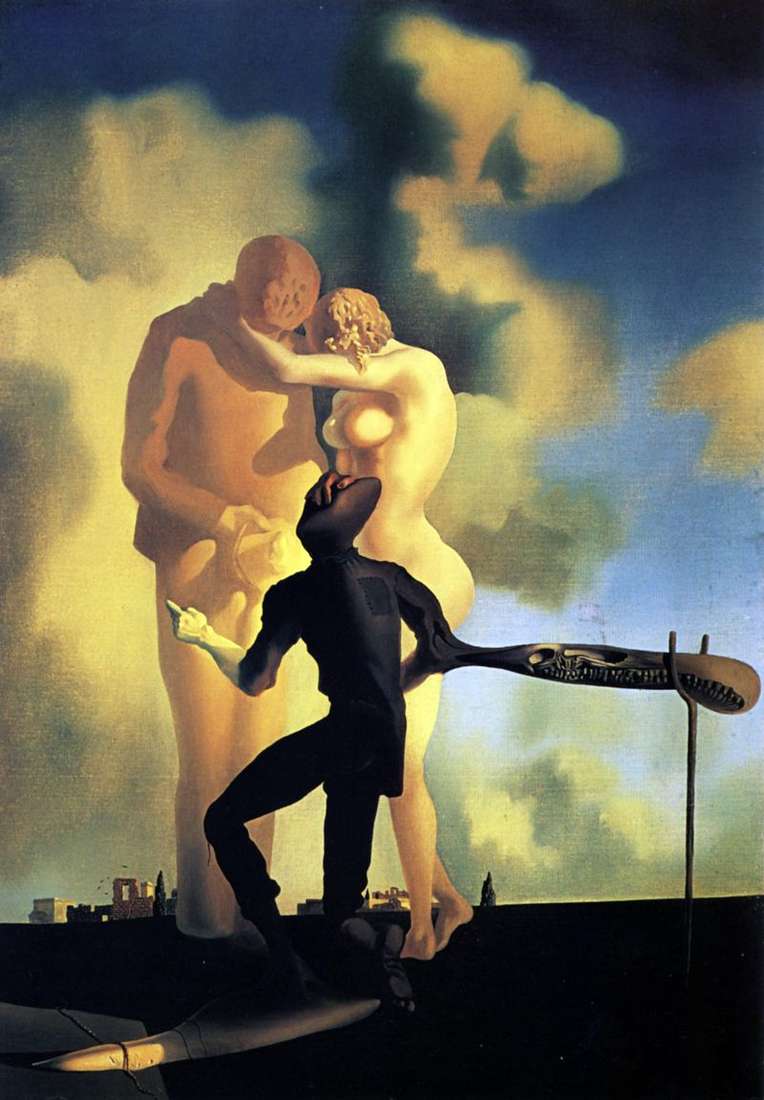 Contemplation of the harp by Salvador Dali
Contemplation of the harp by Salvador Dali Anthropomorphic bread by Salvador Dali
Anthropomorphic bread by Salvador Dali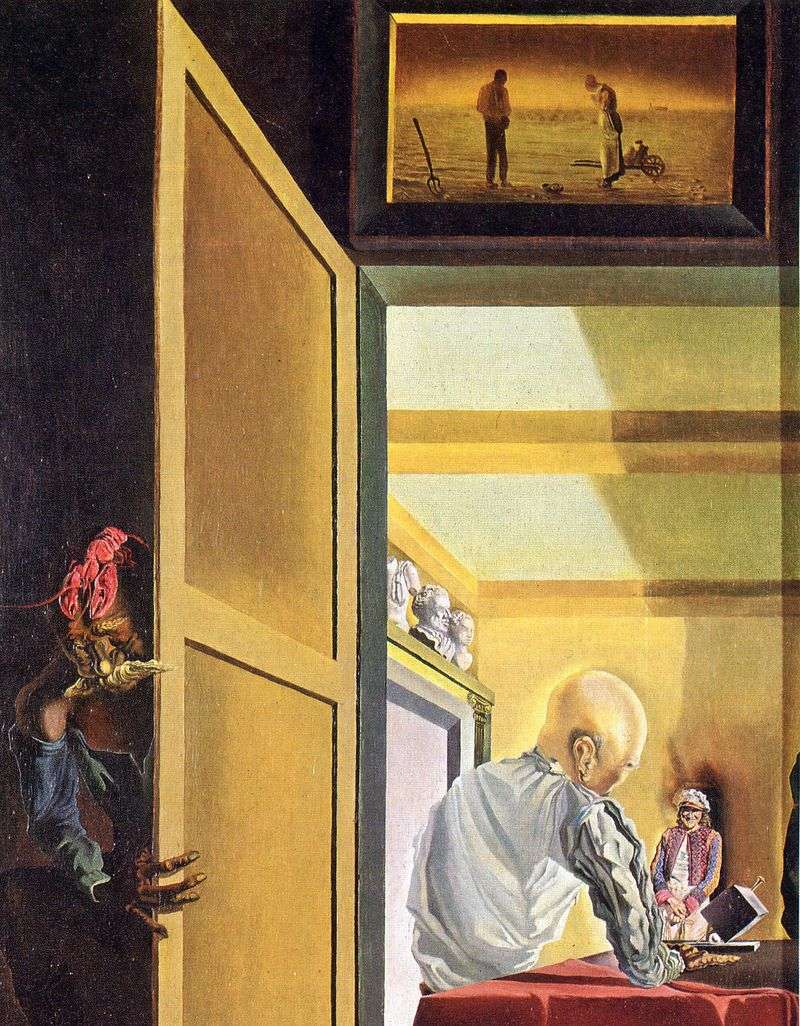 Gala and Angelis Millet just before the onset of conical anamorphosis by Salvador Dali
Gala and Angelis Millet just before the onset of conical anamorphosis by Salvador Dali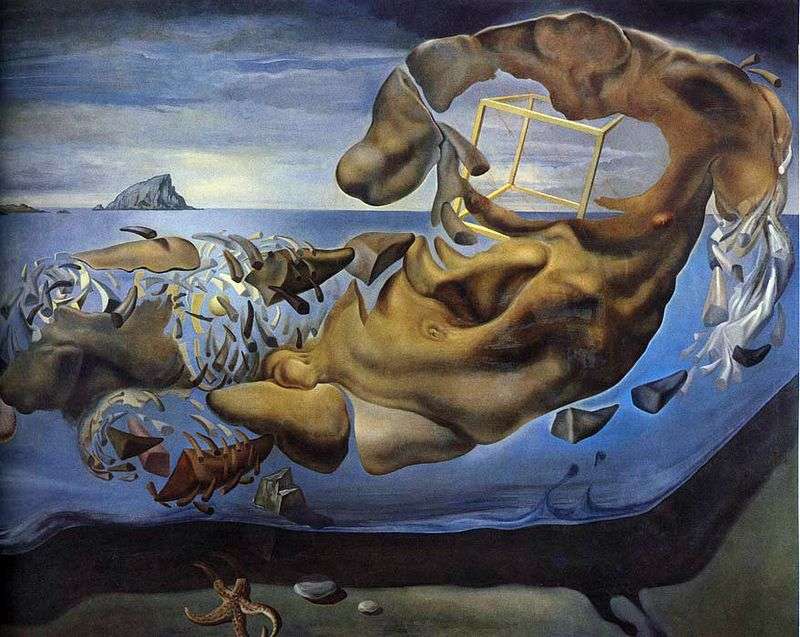 Nosorogoobraznaya figure Ilissa Fidia by Salvador Dali
Nosorogoobraznaya figure Ilissa Fidia by Salvador Dali